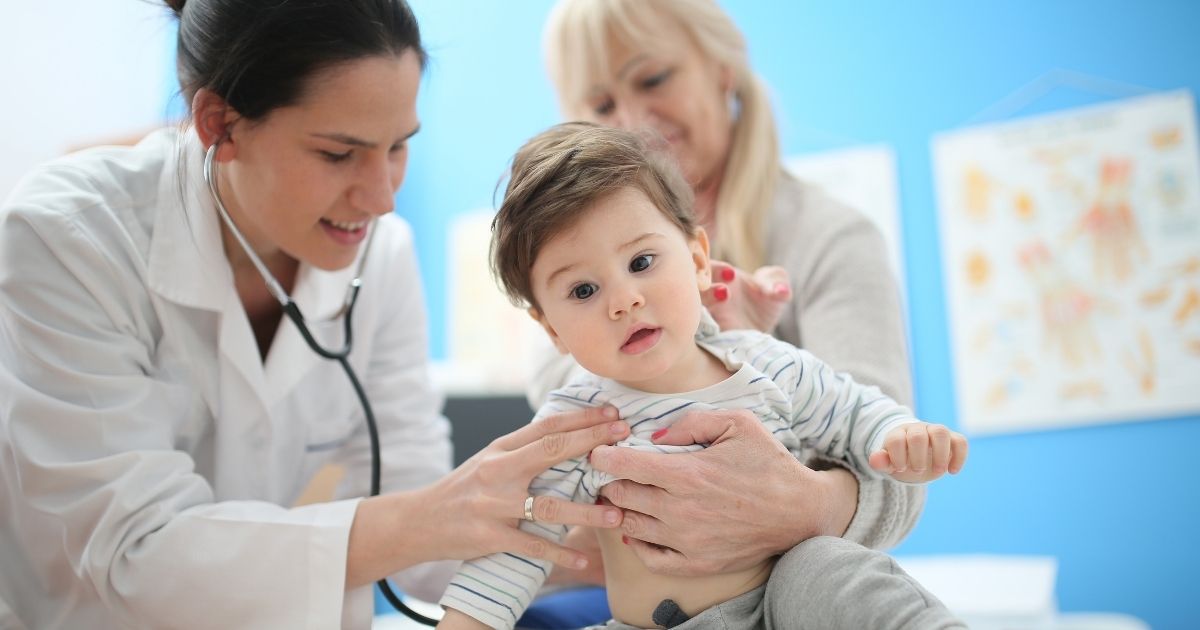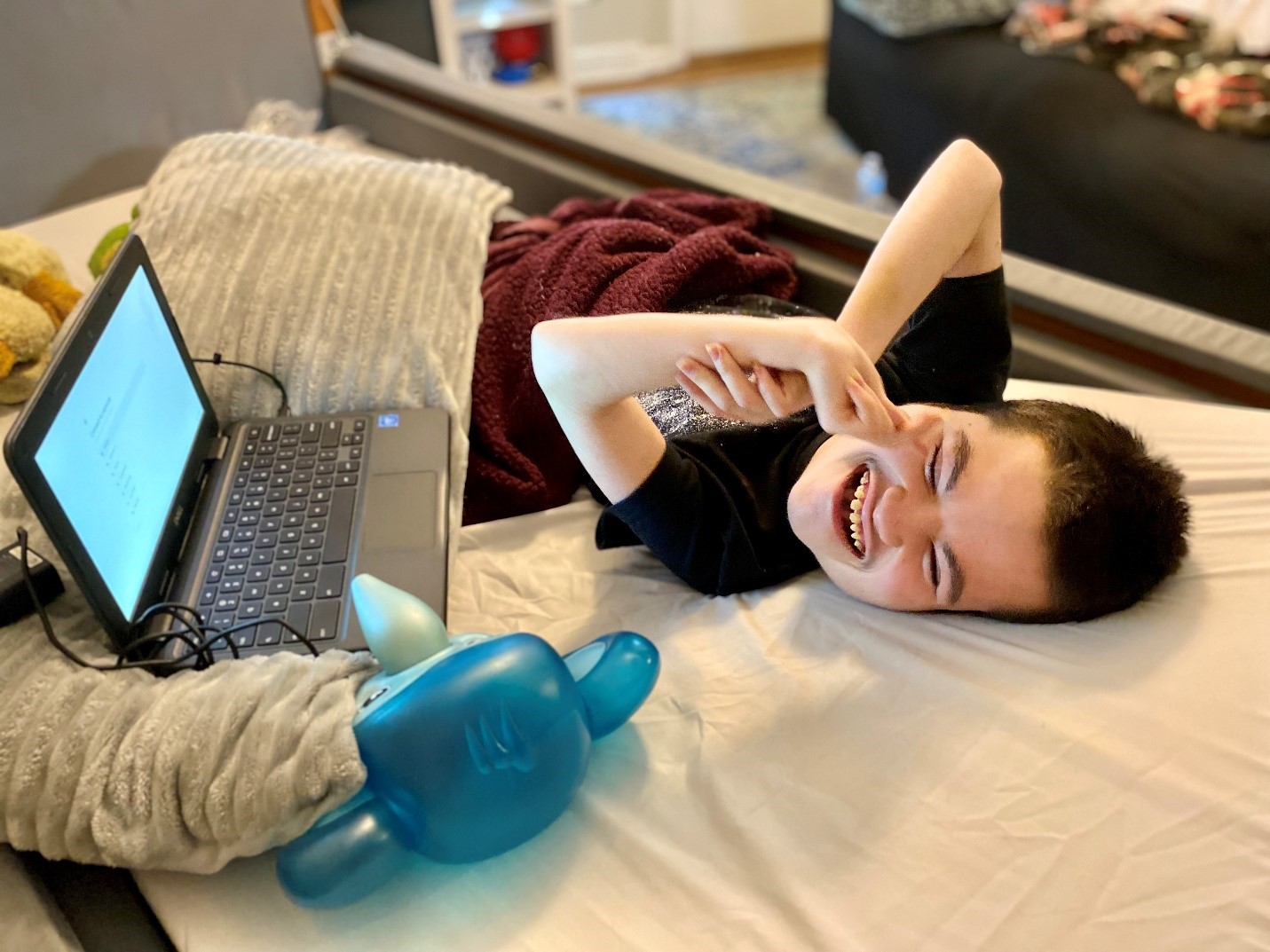
Author: Alexander Fay, MD, PhD
UCSF Benioff Children’s Hospital
Reviewed: June 2022
SUMMARY
Congenital myopathies (CMs) are genetic diseases of the muscles connected to the skeleton. These disorders cause weakness in the muscles throughout the body. CMs often start before birth or in infancy, though milder forms may start later. The weakness may:
- Slowly worsen over time
- Stay the same
- Get better over time
The muscles that control breathing, facial movements, swallowing, and limb movements may be affected. Children with CMs are often delayed in their motor development. The brain and other organs are not affected, in most cases.
JUMP TO
Disorder Overview
DESCRIPTION
Congenital myopathies cause a child’s muscles to be smaller and weaker than normal. This may lead to breathing and trouble eating in infancy. It can also lead to delayed motor development.
Forms of Congenital Myopathies
There are many different forms of CMs. They can be classified in one of two ways:
- By the result of a muscle biopsy. They can be classified according to the results of a muscle biopsy. In this case, they will be divided into categories such as:
- Centronuclear myopathies
- Nemaline rod myopathies
- Central core myopathies
- Congenital fiber-type disproportion
- By the result of genetic testing. They can be classified based on the abnormal gene causing the disorder. For instance:
- MTM1
- NEB
- RYR1
- ACTA1
Severity Levels
More Severe
The most severe forms of CMs may make a child unable to:
- Breathe on their own
- Swallow
- Cough effectively
In these cases, the breathing problems may be so severe that a breathing machine is needed to keep the child alive. Without a breathing machine, a severely affected child may die. Further, with weakened breathing, swallowing, and coughing muscles, respiratory infections like pneumonia can be life-threatening. A feeding tube may be needed for some children to get enough calories in their diet if the muscles that help with chewing and swallowing are very weak.
Less Severe
Types of Muscles Affected
Typically, the muscles most affected are the hips and shoulders. The hands and feet are usually less affected, though there are exceptions.
The muscles of the face and head may be affected. This can lead to:
- An elongated facial structure (this may be a called a “myopathic facies”)
- Decreased movement of the muscles that control facial expression
The muscles that hold up the eyelids and that control movement of the eyes side-to-side and up-and-down may also be weak. This can lead to drooping eyelids and double vision.

SIGNS AND SYMPTOMS
Diagnosing Congenital Myopathies
CMs are usually diagnosed based on:
- A pattern of weak muscles that is most prominent in the face, shoulders or upper arms, and hips
- A normal or only slightly elevated level of creatine kinase (a marker of muscle breakdown)
- Genetic testing
- Sometimes, a muscle biopsy (a surgery where a small piece of muscle is removed to examine under a microscope)
Genetic testing is the best way to learn whether someone definitely has a form of CM. However, a muscle biopsy can be helpful if the genetic test leaves any uncertainty.
Common Symptoms
Common symptoms include:
- Weakness of the facial, neck, and limb muscles that starts in newborns of infants
- A hard time with eating
- A hard time with breathing
In milder forms, weakness may not be obvious until a child is slow to be able to walk. In these milder forms, weakness typically either does not get worse with time or it worsens only very slowly. The child may even gain some strength over time. This can happen even though muscle weakness persists.
The most urgent (acute) symptom that appears during infancy occurs if the child catches a respiratory infection. This can be challenging if the muscles that help with coughing are weak.
CAUSES
Congenital myopathies are genetic diseases. This means that they are caused by a change in the affected person’s DNA. This can happen in four different ways:
1. Dominant inheritance
2. Recessive inheritance
3. X-linked inheritance
4. De novo
CMs are not caused by anything that either parent did or did not do during the pregnancy.
In some cases, a genetic cause is suspected, but cannot be found with genetic testing. This occurs about 50% of the time. In these cases, a muscle biopsy may be the best way to confirm the diagnosis. However, new genetic testing strategies may be able to help doctors reach a diagnosis in these unsolved cases in the coming years.

LABORATORY INVESTIGATIONS
While clinical symptoms are a first step in making a diagnosis, lab investigations are also important:
- Genetic testing. A genetic test can quickly reveal the genetic cause of CMs. However, sometimes, a first genetic test does not show changed genes. In these cases, broader genetic tests, such as whole exome sequencing or whole genome sequencing, may be helpful.
- Blood testing. A blood test for creatine kinase, a protein in muscle tissue, may also be performed. The level of this protein is usually normal in CMs. However, it is elevated in muscular dystrophies.
- Electromyogram (EMG) testing. An EMG is an electrical test of the muscles and nerves. An EMG and a nerve conduction study can help doctors tell CMs from similar diseases.
- Muscle imaging. Images of the muscles using magnetic resonance imaging (MRI) and ultrasound can be used for diagnosing CMs. They may show abnormal-appearing muscles. However, these images are rarely specific enough to make a definitive diagnosis.
- Muscle biopsy. In a muscle biopsy, a small sample of a muscle is examined. This sample is taken by a surgeon. This can be very helpful in confirming signs of CMs in the muscle tissue itself. Signs include:
- Central nuclei
- Central cores
- Nemaline rods
- Fiber-type disproportion

TREATMENT AND THERAPIES
There are no specific treatments that prevent or reverse this muscle disease. However, some treatments and therapies are important to treating symptoms. These include:
Physical, occupational, and speech therapies.
Breathing support.
Feeding support.
Swimming.
Nutrition
Maintaining adequate nutrition is important for fueling muscles. This can help a child gain strength. However, a lot of weight gain can put a strain on weak muscles. Thus, working with a nutritionist may be helpful. A nutritionist can help optimize caloric intake for a child’s activity level and metabolic needs.
Clinical Trials
There is a clinical trial for gene therapy for one form of CM: X-linked myotubular myopathy. However, this treatment will not be helpful for other forms
OUTLOOK
The muscle weakness caused by CMs is usually nonprogressive, meaning it usually does not get worse over time. In fact, a child’s strength may improve over time. Even children with severe muscle weakness in infancy may eventually be able to sit, stand, and walk. However, a child will not typically grow out of a CM.
Infants and children with severe respiratory muscle weakness face special challenges. They will be vulnerable to respiratory infections. The infections can be fatal in some cases.
Predicting Severity
The most helpful factors in learning how severe the disorder will be are:
- The severity of the symptoms at the time the disorder was diagnosed
- The genetic testing results
The features of a child’s muscle biopsy do not necessarily predict the severity of weakness.
Education and School
CMs do not usually affect cognitive abilities. Children should be encouraged to do academic work at a level appropriate for their age.
School accommodations might include:
- An aide to help the student
- Extra time to move between classes
- Physical therapy that replaces physical education
- Other therapy services
Home Life
At home, children may require help with the following, depending on the severity of the disorder:
- Turning in bed
- Transfers
- Toileting
- Eating
Devices
Assistive devices, such as walkers and wheelchairs, can let a child gain more independence and mobility.
As a child grows, devices to help lift the child may be needed. These kinds of devices can help caregivers assist with transfers without injuring themselves.
RELATED DISORDERS
Some disorders look similar to CMs. However, they can usually be distinguished with appropriate diagnostic testing. Some of these similar disorders include:
- Congenital muscular dystrophies
- Congenital myasthenic syndromes
- Spinal muscular atrophy
- Brain disorders
It is common for newborns and infants to have a lot of testing before a diagnosis is reached. Genetic testing is often the best way to make a definitive diagnosis.
Resources
Cure CMD’s mission is to advance research toward treatments for congenital muscular dystrophy (CMD), and improve the lives of those living with CMD through engagement and support of the affected community. Cure CMD offers Peer Match and Mentorship programs, a Pulmonary Care Web Series, Resources for Clinicians & Scientists, CMD Virtual Happy Hours, an extensive video library, and many other resources. You will find community support opportunities, as well as clinical descriptions and care guidelines for each CMD subtype.
Cure CMD also manages the Congenital Muscle Disease International Registry, where affected individuals with congenital muscular dystrophy, congenital myopathy, congenital myasthenic syndrome, and some forms of limb girdle muscular dystrophy, can participate in research and be notified about opportunities to enroll in clinical studies and trials.
Muscular Dystrophy Association
Families are at the heart of Muscular Dystrophy Association’s mission. A caring and concerned group of families started MDA in 1950, and they continue to relentlessly pursue their promise to free families from the life-threatening effects of muscular dystrophy and muscle-debilitating diseases today. MDA focuses on over 43 neuromuscular diseases in children and adults.
MDA empowers families with support by providing: A Resource List, Outside Organization Programs & Information, Summer Camp, Community Education, Community Events, and Young Adult Programs. MDA’s research program awards grants to the world’s best scientists investigating promising theories and therapies that may accelerate treatments and cures for families living with muscular dystrophy, Amyotrophic Lateral Sclerosis (ALS), and related neuromuscular diseases.
Publications
JCN: What Your Pediatric Neurologist Wants You to Know
Podcast from SAGE Neuroscience and Neurology/Journal of Child Neurology (JCN). JCN’s Residents and Fellows Board Director, Dr. Alison Christy, interviews Dr. Farida Abid, Assistant Professor in Pediatric Neurology at Texas Children’s Hospital about Neuromuscular disease.

Child Neurology Foundation (CNF) solicits resources from the community to be included on this webpage through an application process. CNF reserves the right to remove entities at any time if information is deemed inappropriate or inconsistent with the mission, vision, and values of CNF.
Research
ClinicalTrials.gov for Congenital Myopathy (birth to 17 years).
These are clinical trials that are recruiting or will be recruiting. Updates are made daily, so you are encouraged to check back frequently.
ClinicalTrials.gov is a database of privately and publicly funded clinical studies conducted around the world. This is a resource provided by the U.S. National Library of Medicine (NLM), which is an institute within the National Institutes of Health (NIH). Listing a study does not mean it has been evaluated by the U.S. Federal Government. Please read the NLM disclaimer for details.
Before participating in a study, you are encouraged to talk to your health care provider and learn about the risks and potential benefits.
Family Stories
The Cure CMD blog features #CMD Voices — perspectives and insights from individuals with congenital muscular dystrophy and their caregivers.
The information in the CNF Child Neurology Disorder Directory is not intended to provide diagnosis, treatment, or medical advice and should not be considered a substitute for advice from a healthcare professional. Content provided is for informational purposes only. CNF is not responsible for actions taken based on the information included on this webpage. Please consult with a physician or other healthcare professional regarding any medical or health related diagnosis or treatment options.
References
Maggi L, Scoto M, Cirak S, Robb SA, Klein A, Lillis S, Cullup T, Feng L, Manzur AY, Sewry CA, Abbs S, Jungbluth H, Muntoni F. Congenital myopathies—Clinical features and frequency of individual subtypes diagnosed over a 5-year period in the United Kingdom. Neuromuscul Disord. 2013 Mar;23(3):195-205. https://doi.org/10.1016/j.nmd.2013.01.004. Epub 2013 Feb 8. PMID: 23394784.
Maani N, Karolczak S, Dowling JJ. Genetic therapy for congenital myopathies. Curr Opin Neurol. 2021 Oct 1;34(5):727-737. https://doi.org/10.1097/WCO.0000000000000978. PMID: 34267051.
Jungbluth H, Muntoni F. Therapeutic aspects in congenital myopathies. Semin Pediatr Neurol. 2019 Apr;29:71-82. https://doi.org/10.1016/j.spen.2019.01.004. Epub 2019 Jan 16. PMID: 31060727.
Jungbluth H, Treves S, Zorzato F, Sarkozy A, Ochala J, Sewry C, Phadke R, Gautel M, Muntoni F. Congenital myopathies: Disorders of excitation-contraction coupling and muscle contraction. Nat Rev Neurol. 2018 Mar;14(3):151-167. https://doi.org/10.1038/nrneurol.2017.191. Epub 2018 Feb 2. PMID: 29391587.
Gilbreath HR, Castro D, Iannaccone ST. Congenital myopathies and muscular dystrophies. Neurol Clin. 2014 Aug;32(3):689-703, viii. https://doi.org/10.1016/j.ncl.2014.04.006. PMID: 25037085.
Laitila J, Wallgren-Pettersson C. Recent advances in nemaline myopathy. Neuromuscul Disord. 2021 Oct;31(10):955-967. https://doi.org/10.1016/j.nmd.2021.07.012. Epub 2021 Jul 24. PMID: 34561123.4087576618
